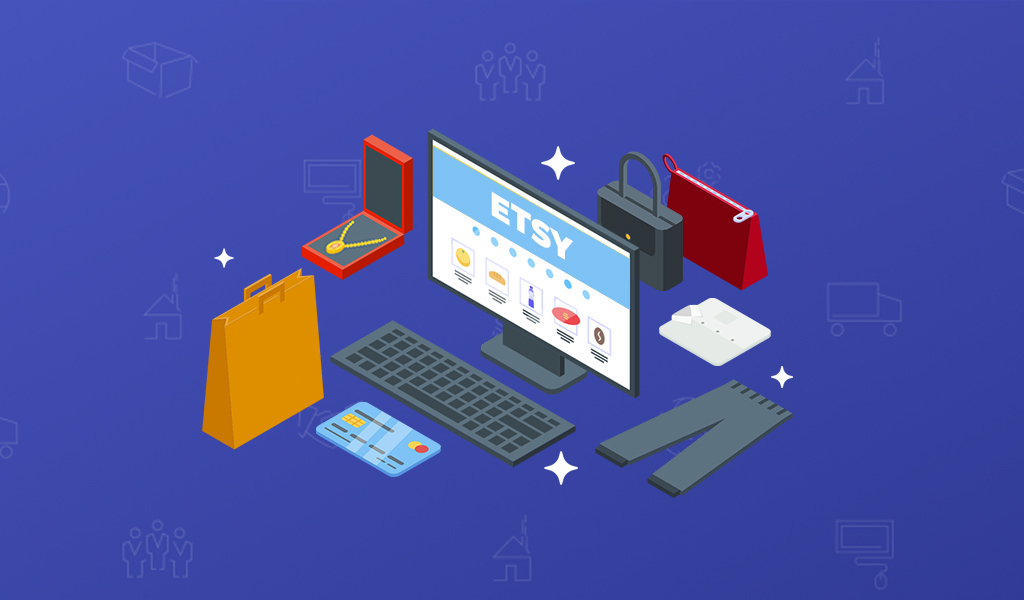News and Insights
E-commerce, Logistics, and Small Business Management
Is Outsourcing Etsy Fulfillment Right for You? A Reality Check for One-of-a-Kind Sellers

Outsourcing fulfillment can sound like a dream come true—especially when you’re drowning in packing slips and shipping labels. But for some Etsy sellers, particularly those who specialize in highly variable or one-of-a-kind products, handing off fulfillment may not be realistic. In fact, it could do more harm than good.
Before you start shopping for a third-party logistics partner (3PL), take a step back and evaluate whether your business model is even compatible with outsourcing. Not every shop is—and that’s okay.
This post is designed to give you a clear-eyed view of whether 3PL fulfillment is a viable option for your Etsy business, or whether you’re better off refining your in-house process for now.
The Promise of Outsourced Fulfillment
When Etsy sellers reach a certain level of growth, the idea of outsourcing becomes tempting. A 3PL promises to:
- Store your inventory
- Pack and ship your orders
- Handle shipping updates and tracking
- Free up your time to focus on the creative or marketing side of your business
It’s a great solution—if your products and workflows are a fit.
But many Etsy businesses are built around uniqueness, personalization, and creative variation, and that can make fulfillment outsourcing extremely challenging.
The Operational Reality of One-Off Products
Running a 3PL operation requires repeatability. In order to fulfill orders accurately and efficiently, your fulfillment partner needs to follow a defined, standardized process. That includes:
- Recognizing SKUs and variants
- Following documented packaging instructions
- Pulling the correct items without interpretation
- Applying inserts, labels, or gift notes based on known workflows
When your business relies heavily on one-of-a-kind items, things start to fall apart:
- SKUs change constantly, making inventory tracking unreliablePackaging needs vary too much for consistency
- There’s no clear process to document—because each order is different
- The risk of errors (wrong item, mispack, missing customization) rises fast
Even if a 3PL is willing to try, the relationship usually strains under the operational friction.
Important: If you predominantly sell one-off items, an outsourced fulfillment partner will not be a viable option.
Let’s be clear: we’re not talking about moderate product variation—like scent options, chain lengths, or printed gift notes.
We’re talking about businesses that:
- Create one-of-a-kind jewelry pieces with no fixed SKU structure
- Sell handmade artwork, pottery, or decor where every piece is unique
- Customize every order with unique requests or variations
- List items individually and rarely repeat listings
If this describes your shop, outsourcing won’t just be inefficient—it will likely damage your customer experience.
What You Can Do Instead
If you’re not a good candidate for outsourcing, don’t panic. You can still grow—you just need to optimize your in-house fulfillment system to work better at scale.
Streamline what you can:
- Batch similar tasks (print, prep, pack, label)
- Pre-organize packaging materials
- Use clear staging areas for open orders
- Create templated insert cards or gift messages
- Train part-time help (or family) using simple visual checklists
Standardize where possible:
Even if every product is unique, some aspects of your process can still be standardized—like how you pack, ship, or insert thank-you cards. Document those repeatable steps so you’re not reinventing the wheel every day.
What If Only Some of Your Items Are One-of-a-Kind?
This is where things get more nuanced. If you’re moving toward:
- Offering collections with repeatable SKUs
- Standardizing packaging for new product lines
- Creating best-sellers that stay in rotation
Then you might be able to segment your catalog: keep one-off items in-house, and outsource only the repeatable products.
A good 3PL can help you set up split fulfillment logic—just make sure the division is clear and sustainable.
When It Does Make Sense to Outsource
Outsourcing Etsy fulfillment can be a game-changer when you:
- Sell consistent SKUs in moderate to high volume
- Have defined packaging workflows that can be followed repeatedly
- Are spending too much time on fulfillment and can’t scale further
- Are emotionally ready to let go of the packing and shipping process
If you’ve reached this point, our guide to finding the right Etsy fulfillment partner will walk you through the key traits to look for in a 3PL.
Final Thoughts: Choose Scalability That Fits
Outsourcing isn’t a status symbol—it’s a strategic fit. For some Etsy sellers, especially those with scalable product lines, a 3PL can be a smart next step.
But if your brand thrives on uniqueness and creative variation, you’re not behind—you’re just on a different path.
Keep fulfillment close. Streamline what you can. And when you’re ready to scale in a way that protects your customer experience, you’ll be doing it on your terms.
Questions? Let’s talk!

Recent Comments